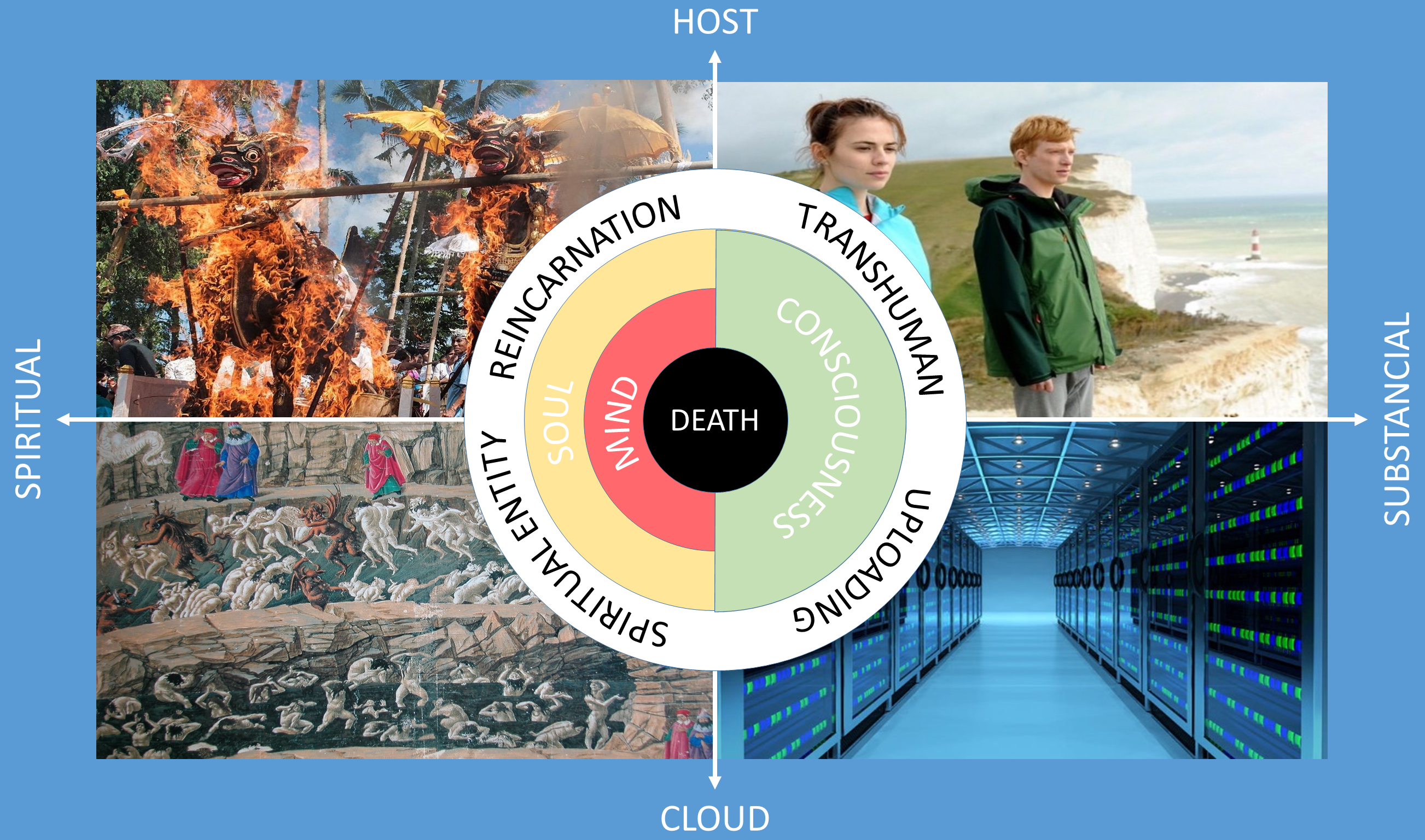Values: Death and Dying
Martha and Ash are a young couple who seems happy – it seems – to live together. While Martha is very relationally oriented, Ash has difficulties with it. He spends a lot of time with and in social networks. Ash often does not react. When preparing the lunch is again such a situation. After responding to nothing, Martha asks, “There’s only one bowl, would you eat out of a shoe?” In his mental absence, he says, “Yes.” What leads to a dispute over the mobile phone and the social Media and Martha: “Sometimes you disappear in it”. Ash just posts everything personally on the social platform. He finds a photo of his father, which is shared immediately – it might interest someone. Nevertheless, Ash is a docile boy. If Martha asks “cell phone in the glove compartment”, then that happens too. If not, then he is very distracted while driving. Which ultimately causes him to die in a car.
Already during the funeral ceremony a friend of Martha proposes to her the services of KI. At first she reacts very badly. Ultimately, she orders this service. All digital legacies are analyzed by a system and the behavior of the deceased is recombined. As it turns out, Martha can communicate well with her deceased husband both via SMS and via language. It creates a good and intense dialogue. Martha: “That’s exactly what he would have said”. This makes the AI a constant companion. Even when Martha determines that she is pregnant, the system is integrated. It gets a photo of the embryo and both discuss whether the heartbeat might be too fast. Similar to the movie HER, a personal relationship develops between a person and an AI. Death is then far from being so terrible, because at least a spiritual survival of the deceased is suggested.
The awakening of the mammal to man has also brought with it the knowledge of dying and death. For thousands of years, death was the only thing man could really be sure of. It has been assumed that all living beings must die. These seemingly immovable facts have been used by all religions. In the respective promises of salvation the creditors are promised a life after death. Depending on the tradition, this is colored differently. If there are souls in the western book religions who live on after the biological death as a spiritual being in another place, thus in the hereafter, then it is the reincarnation in the Eastern religion.
These considerations can be generalized as follows.
In Hinduism / Buddhism, the soul needs a HOST. This HOST does not always and inevitably have to be human. Depending on past life (karma), you can also be reborn as an animal, plant or insect. The HOST variant now enjoys more and more popularity through robotics and artificial intelligence. The transhuman man is characterized above all in his longevity or even in his immortality. These ability is realized through technical extensions in an electronic and genetic way. Some visionaries believe that you could inhabit a variety of HOSTs in a row and possibly at the same time. The current science fiction series “Altered Carbon” allows the human mind to adopt a variety of HOSTs – from very simple to luxurious, depending on the financial possibility.
The HOST variant also plays a role in this episode of Black Mirror. Inasmuch as the spirit of Ash is revived in a humanoid robot. The HOST variant thus exists in the Asian tradition and in the artificial, digital world. In the Western tradition, the soul, which is intended for a survival in the hereafter, is substance-free. So there is no matter necessary for the life of a soul. Interestingly, however, is that these souls then live in the hereafter almost identical with the worldly life. Members of the “Church of Jesus, Christ of Latter-day Saints” are married to eternal life and spend most of their life together in the afterlife. These nonsensical “spiritual beings” also live in an unknown, but for believers, real, place. This model is also used in science fiction and has the name “uploading” there. Information is uploaded to a cloud, including an unknown location, and can be retrieved from any location.
Something similar happened to Ash in the episode. His entire data stored in the social media was taken over by an artificial intelligence and from this a consciousness in a cloud was created again. Martha was able to access this service. Once awareness is sufficiently researched and you have access to the Correlate, you can upload the data, let it live on there, or transfer it to a HOST. You do not have eternal life because you depend on the hardware, but you do not have eternal existence with matter.
The relationship between Martha and the simulated Ash then undergoes a brutal turn as the system offers a revolutionary novelty. It suggests a humanoid robot with the deceased’s format. Martha is persuaded and ordered this device. Delivered is a still faceless lump that looks like a human. To activate it, put it in the bathtub, let warm water in and add an activation powder. After a certain amount of processing Ash actually appears, just like in real life. Astonished, she says: “You look like him on a good day”. The two are getting to know each other, which works quite well in the first phase. Even a sexual relationship is possible with this machine. Over time, however, Martha thinks that it really is a machine and is planning a test. During their lifetime, they were often at a cliff and looked at the sea. Right there she goes with the robot and demands that he jump down. Without emotion, this machine sends itself to exercise this order. Martha then states, “You are not you either, you are just a faint reflection”. There is no past in you and you are just an actor. Martha ends this relationship, but keeps the machine and discards it in the attic.
Similar to HER, the relationship with AI runs well as long as it is handled through text and voice communication. The moment human robots come into play, this relationship collapses immediately. In HER, it was the time when AI brought Samantha, an artificial prostitute, to satisfy Theodore’s needs. Many science fiction films show that while we can handle AI quite well on a linguistic level, when corporeality comes along, it leads to a fiasco. The humanoids look deceptively similar to humans. Therefore, such a kind of communication and relationship is established. This sudden realization of having to deal with a machine, even if it is very intelligent and able to simulate emotions, leads to a “cognitive dissonance”. It follows that we must first learn how to handle embodied AI. These beings are not animals and not humans, but something completely new.





 Deutsch
Deutsch English
English